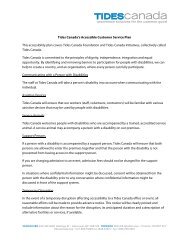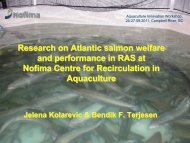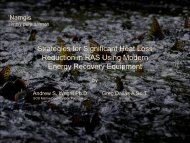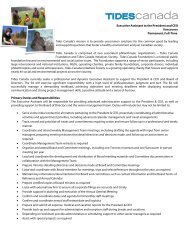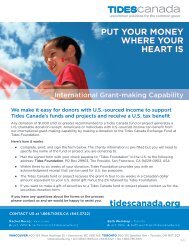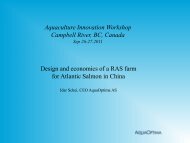Entrepreneurial Solutions to Insoluble Problems - Tides Canada
Entrepreneurial Solutions to Insoluble Problems - Tides Canada
Entrepreneurial Solutions to Insoluble Problems - Tides Canada
- No tags were found...
Create successful ePaper yourself
Turn your PDF publications into a flip-book with our unique Google optimized e-Paper software.
Growing OpportunityDeeper Dive: Energy‘The biggest challenge?Educating potentialcus<strong>to</strong>mers regarding theneed for, and advantagesof, sustainable solutions.Essentially, making thebusiness case for ourservices.’Environment Sec<strong>to</strong>r80The Global Reporters 2006 was an earlystepping s<strong>to</strong>ne in SustainAbility’s evolvingSkoll Program.As suggested in Figure 3.1, the waymainstream business frames sustainabilityissues is moving from an early focus oncompliance (involving a largely defensivebusiness positioning), through a periodof corporate citizenship (with a growingdegree of engagement and beyondcompliance,voluntary effort) <strong>to</strong> a nowemergingphase, involving a fundamentalshift <strong>to</strong> competitive strategies built aroundinnovative technologies, entrepreneurialsolutions and potentially disruptivebusiness models.Interestingly, energy is under-representedin current memberships of leading socialentrepreneurship networks. By our analysis,only eight Ashoka Fellows (out of over1,800) are operating in this sec<strong>to</strong>r, withtwo Schwab Foundation network membersand no Skoll Foundation entrepreneurs, <strong>to</strong>date. By contrast, the Cleantech VentureNetwork has a major focus on clean energyand 1,300 affiliate inves<strong>to</strong>r members.One venture capital fund <strong>to</strong>ld us it now hasover 2,000 cleantech firms on its database.The business case37So what is the mainstream business casefor looking at social entrepreneurship in theenergy sec<strong>to</strong>r? Clearly it has varied as theagenda for the energy sec<strong>to</strong>r has movedbeyond the basic compliance stage throughvarious forms of citizenship <strong>to</strong> a newgeneration of sustainability-focusedcompetitive strategies.But the critical mass of the energy sec<strong>to</strong>ris still mired in unsustainability. Even thebest energy sec<strong>to</strong>r companies are largelyoperating versions 1.0 and 2.0 (see Figure3.1) of the business case. In SustainAbility’s2006 Global Reporters survey of internationalbest practice in sustainabilityreport, a number of energy companiesmade it in<strong>to</strong> our Top 50, including BP, Enel,Shell, Sta<strong>to</strong>il, and Suez. 80 The sort of issuessuch companies are currently focusing oninclude: environmental and social footprints(BP); provision of micro-loans <strong>to</strong> helpbusinesses develop cleaner indoor cookings<strong>to</strong>ves (Shell) and microfinance (BP);access <strong>to</strong> new forms of energy (Sta<strong>to</strong>il);and the pursuit of sustainable developmentthrough better integration of differentservice offerings, including energy, wastemanagement, and water (Suez).Figure 5.2World marketed energy:OECD and non-OECD consumption1980–2030Quadrillion BTUsHis<strong>to</strong>ry Projection500Figure 5.3World marketed energy:consumption by fuel type1980–2030Quadrillion BTUsHis<strong>to</strong>ry Projection500400Non-OECD400OECD300300Oil200200CoalNatural Gas100100RenewablesNuclear19801990200020032010202020301980199020002003201020202030




